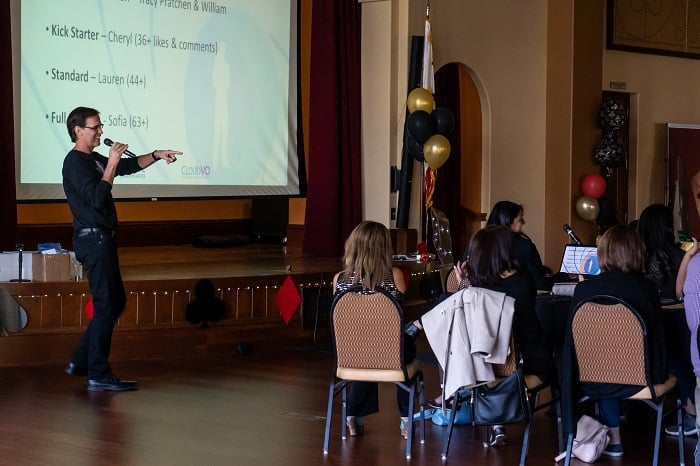Check out this article we’ve published from Harvard Business Review which offers several helpful tips for people looking for a boost in their daily work-life.
Why do people get trapped in a midcareer rut? In some cases it’s because, after succeeding early on, they play it safe rather than continuing to take the risks that would help them advance. As a result, they feel stuck in the status quo. If this situation sounds familiar, don’t just hope things will change — get help. Find a trustworthy mentor who has navigated the same challenges and come out the other side. During your meetings together, discuss the tough work situations you’re facing, and ask about their experiences and how they push themselves to keep growing. You could also find an executive coach to meet with regularly. A good coach will help you understand what’s holding you back and explore options for your future. And do some reflecting on your own, too. Think about whether you still get satisfaction from your job, whether you’re playing it safe at work and where you want your career to go next. (This tip is adapted from “Are You at Risk of a Midcareer Rut?” by Laurence Minsky and Julia Tang Peters.)

When Hiring for Leadership Roles, Look Beyond the Obvious Candidates
When deciding who to promote into a leadership role, most executives look at how candidates have performed in their current job. But past performance isn’t always the best predictor of success. Individual contributors are usually measured on their ability, likability and drive — but leadership demands other traits, including integrity and emotional intelligence. So don’t just promote your highest performer. Instead, think about what good leadership looks like at your company. Do you need people who can drive results? Bring everyone together? Listen and develop others? Innovate and evolve the business? Then think about who has the skills you’re looking for — and take another look at employees who “may not be ready.” Reconsider them on the basis of their ambition, reputation and passion for your business. Sometimes the youngest, most agile people turn into capable leaders when given the chance. (This tip is adapted from “Hire Leaders for What They Can Do, Not What They Have Done,” by Josh Bersin and Tomas Chamorro-Premuzic.)
What Not to Say When an Employee Makes a Mistake
When one of your employees makes a mistake, what do you say? You might feel frustrated or angry, and ask something like “What were you thinking?” or “What went wrong?” But those kinds of past-focused questions only reinforce the mistake and make the person feel defensive. Instead, ask a question that looks forward: “How will you do it differently next time?” Focusing on the future this way allows the person to acknowledge their mistake and demonstrate what he or she has learned. Additionally, it shows that you’re confident in the person’s abilities and gives you the chance to point out any problems in his thinking. Future-focused questions aren’t easy to ask when your emotions are hot. Take a deep breath before speaking, and remember that your goal in this situation is to help the employee grow — not to make him feel worse than he already does. (This tip is adapted from “What to Say When Your Employee Makes a Mistake,” by Peter Bregman.)
You Aren’t Rehearsing Enough for Your Presentations
Before a critical presentation, the best thing you can do is rehearse — a lot. That doesn’t mean you need to memorize every line (which will make you sound too rehearsed). Your goal should be to feel confident in what you’re saying while leaving room for spontaneity. Spend extra time on the beginning and the end of your talk, including your first and last slides. The introduction sets the stage for your message and gives your audience a reason to care. Your conclusion determines which ideas people will walk away with. If you nail these two sections of the talk, you’ll probably do well no matter what happens. You should also repeatedly practice any sections that have complex or technical content. While you rehearse, consider recording yourself on your phone; play it back to watch for distracting habits (fidgeting, avoiding eye contact) and areas where you seem unsure of yourself. Rehearse those sections a few more times. (This tip is adapted from “How to Rehearse for an Important Presentation,” by Carmine Gallo.)

Managing Partner Keith Warner of Pacific Workplaces crushing his presentation at the company’s annual team building event, “Pac Day 2019.”
Manage the Endless Stream of Email by Setting Boundaries
One of the reasons email is so hard to manage is that sending it is easy. We can fill up each other’s inboxes by just clicking a button — that is why it’s important to set boundaries around email. Here are three things to try:
— USE AUTOREPLIES: When you need time to focus on work, your email autoreply can tell people that you’re unavailable and when you’ll get back to them. Whether you’ll reply in a day or a week, let people know what to expect. (And in the meantime, give yourself permission to ignore messages that can wait.)
— SET GUIDELINES FOR YOUR TEAM: Tell people how and when you prefer to communicate, and ask colleagues and clients about their preferences as well. Don’t forget to revisit this discussion when people join the team or new projects begin.
— LEAD BY EXAMPLE: If you answer emails late at night or on weekends, you’re telling your team to do the same. Use services that allow you to schedule emails to send later. Better yet, step away from your inbox entirely.
(This tip is adapted from “6 Ways to Set Boundaries Around Email,” by Sarah K. Peck.)
This article first appeared on Harvard Business Review and was republished with permission.
Copyright: c.2019 Harvard Business School Publishing Corp.
Looking for a workplace with savvy professionals who can support and motivate you? Find a Pacific Workplaces location and book a tour.

